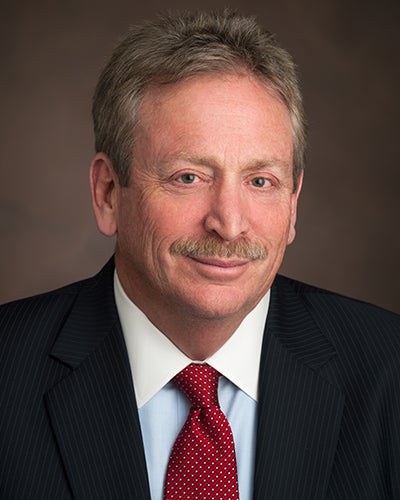
Rebates & Programs
Members qualify for exclusive rebates and programs. Enroll in a program or apply for rebates on energy efficient electric equipment and appliances.

Members qualify for exclusive rebates and programs. Enroll in a program or apply for rebates on energy efficient electric equipment and appliances.

United Power has a wildfire mitigation plan to protect its members and communities. The plan is continuously evaluated and updated to reduce risk.

Operation Round Up is a voluntary way United Power members can give to their communities by having their monthly billing statements rounded up.
The electric industry is progressing rapidly. Our Cooperative Roadmap highlights the co-op's objectives for success now and in the future.
Date: 4/29/2022
United Power filed a non-conditional Notice of Intent to Withdraw from our power supplier in compliance with a recent Federal Energy Regulatory Commission ruling. This changes our previously announced Tri-State exit date of Jan. 1, 2024 to May 1, 2024.
Brighton, Colorado/Washington D.C. — United Power, a rural electric cooperative based in Brighton, Colorado, today filed its Notice of Intent to withdraw from the membership of Tri-State Generation and Transmission Association at the Federal Energy Regulatory Commission (FERC) in Washington, D.C., effective January 1, 2024. The two-year notice period was accepted by FERC in an October 29, 2021 ruling.
United Power is the largest member of Tri-State and accounts for nearly 20% of the G&T’s annual revenue. United Power has unsuccessfully attempted to modify its all requirements contract with the G&T for more than three years. In the last nine months alone United Power has tendered three formal term sheets and held numerous high-level meetings, but leadership at the G&T has been unresponsive to the contract modification requests.
“Sadly, our power supplier has been ignoring our efforts to come to an amicable arrangement that better supports the needs of our members while guaranteeing that our prior commitments are met,” said Mark A. Gabriel, United Power President and Chief Executive Officer. “Instead of working with us in the pursuit of lower-cost, cleaner options, Tri-State has resisted these developments. Tri-State recently purchased additional coal generation, is limiting our members’ ability to add more carbon free generation and is penalizing additional storage on our system. They also offer non-members preferable transmission rates over those of us who have invested in the system for decades.”
United Power has been a leader in the deployment of innovative technologies and in the integration of renewable energy resources. Currently United Power has 84 megawatts of renewable generation on its system including 46 megawatts of utility scale solar, Colorado’s largest battery storage project and more than 6,800 roof top systems. Tri-State’s policies include penalties if a utility exceeds 5% of generation other than from the G&T.
There are a number of cases currently in front of FERC, Denver Courts, Adams County Courts and the U.S. Court of Appeals that will ultimately decide the exit fee for United Power. United Power joins Delta Montrose Electric Association and Kit Carson who have exited the G&T in the last five years. At least six other cooperatives are considering a potential exit.
“When I came to United Power nine months ago, I was extremely optimistic that we would be able to come to an agreement that lives up to our commitment for past investments and allows us to provide lower cost, cleaner options to our rapidly growing communities in the future,” Gabriel said. “Our decision to depart is not made lightly but follows the cooperative principles of voluntary participation and member’s economic participation by choice,” added Gabriel.
United Power will be seeking alternative power supply and the use of transmission as outlined by FERC as part of Open Access Transmission Tariffs.
About United Power
United Power is a member-owned, not-for-profit electric cooperative, delivering electricity to homes, farms and businesses throughout Colorado’s northern front range. The cooperative is one of the fastest-growing electric cooperatives in the nation, and in June joined the elite ranks of cooperatives serving more than 100,000 meters. The 900 square mile service territory extends from the mountains of Coal Creek and Golden Gate Canyon, along the I-25 corridor and Carbon Valley region, to the farmlands of Brighton, Hudson and Keenesburg. United Power is also a founding member of the NextGen Cooperative Alliance, dedicated to expanding the power supply and procurement options and reforming the traditional Generation and Transmission (G&T) business model. For more information about the cooperative, visit www.unitedpower.com or follow them on social media Facebook, Twitter, LinkedIn, YouTube and Instagram.
###
United Power has announced that there will not be a scheduled rate increase for residential or business members in 2022. This marks the second consecutive year rates have not been increased for members. The cooperative’s Board of Directors made the decision in November upon approval of the 2022 budget.
Over the course of the past several months, United Power has focused its efforts to reduce spending where possible and control cooperative costs. It has also continued to monitor the pandemic’s economic impact on the communities it serves and the members on its lines. While there has been a slow transition to normal functions, the result of the cooperative’s cost control measures has enabled it to once again avoid a rate increase, providing a little additional relief for members who continue to feel the pandemic’s affects heading into the holiday season.
“We are proud to announce that members will not have to worry about how a rate increase will affect them this upcoming year,” said Mark A. Gabriel, United Power’s President and Chief Executive Officer. “As a cooperative, we don’t answer to corporate shareholders or investor interests, but are here to serve each of our members. We have the flexibility to shift directions quickly, like we had to over the past year, to drive better results for you, our members.”
Continued growth also played a significant role in the cooperative’s ability to maintain its current rate structure. Growth this year has exceeded expectations, and United Power became just the second Colorado co-op to surpass 100,000 meters earlier this summer.
United Power understands its members have different needs and use electricity in vastly different ways. The cooperative’s residential rates are designed so members have the option to choose one that most closely fits how they use energy. When the demand rate debuted, it separated the energy and demand components and allowed the cooperative to more fairly charge members for both their energy use and impact on the grid. Residential members have four different rates to choose from, each designed with slight variations that allow you to review your energy usage and pick a rate that works best for you and your family.
However you use your energy, the flexibility of the cooperative’s residential rates should meet most members’ needs.
You can compare the demand and energy charges of each rate and choose one that most closely fits how you and your family use energy here.
Members who are curious how home electronics and appliances may impact their demand charge can use the cooperative’s Demand Calculator on the Understanding Demand page.
 During my first nine months here at United Power I have had the tremendous opportunity to experience “the cooperative difference” as we serve our rapidly growing base of members.
During my first nine months here at United Power I have had the tremendous opportunity to experience “the cooperative difference” as we serve our rapidly growing base of members.
What is the cooperative difference? It is the way we are all member-owners of this great organization. It is the way we interact in serving your communities and it is the way we recognize the importance of supporting the United Power “family.” Many different types of organizations provide power, but cooperatives do it in unique fashion.
Here are just a few of my experiences since coming to United Power:
The next few years will bring remarkable changes to the energy industry across the country. The cooperative difference means we have a special lens, asking not only what we can do to improve our system but how can we improve the lives of our members. The flexibility of the cooperative model means your input is solicited and valued. Your Board of Directors is a direct pipeline to our organization, and they represent you with passion.
During the next several months we will be having conversations across the communities we serve focused on our 10-Year Working Plan that lays out a vision and priorities for the coming decade. We want to ensure there is an aligned vision for the future as we take advantage of the technologies, societal changes and improved environmental footprint at United Power. We must welcome the changes our members require with open arms as electric vehicles, solar panels, battery storage and yet-to-be-determined technologies expand across our footprint. As a cooperative we are anxious to help our communities thrive and are driven to ensure an even brighter future.
Whether it is providing technical information, working with developers who are expanding housing and business opportunities to our local economy or partnering to bring efficiencies to industry, the cooperative difference is in our DNA. It is why we exist, what we strive for every day and how we live our values.
United Power’s outage restoration system is among the most advanced and innovative in the country. While the cooperative has a national reputation for its forward-thinking beneficial energy projects, behind the scenes it has also dedicated significant resources to improve system reliability and reduce member outage times. The result is one that utilizes a sophisticated network of automated field devices that allow system operators and line crews to respond and resolve outages more quickly while often also preventing larger outages affecting more members.
Automated field devices fall into a varying spectrum from simple to complex, but they all work in conjunction to identify, isolate and, when possible, resolve “faults.” A fault is when the flow of electricity is abnormal or interrupted and can be caused by any number of incidents, such as weather, vegetation or equipment failures. Automated devices detect these faults and respond to them. Each type of device has a different response but all have the same purpose – to keep your lights on.
Fuses are not automated, but they are the simplest and least expensive means of protecting the cooperative’s system from fault damage and preventing larger outages. Fuses are “sacrificial” devices used to isolate small areas. They blow quickly in response to a fault, usually resulting in a relatively small outage impacting only a handful of members while maintaining service to any remaining members downstream of the fault. Line crews are able to quickly and easily replace these devices to restore power. Think of fuses like GFCI outlets in your home. When they detect an abnormal current, they shut off power to protect you.
The next level of protection against faults are reclosers and breakers. Although reclosers and breakers are technically separate devices, they function in similar ways. They protect much larger service areas and can respond to a fault in just a few seconds. This fault response is the most common cause of power “blinks.” When your house lights dim temporarily or you lose power briefly, this is caused by a breaker detecting a fault and responding. Breakers will attempt to reclose automatically to determine if the fault is still present. In the event of a sustained fault, system operators can reclose some breakers remotely once the fault has been cleared, limiting outage times for members impacted. While fuses in your home will shut off power to a single outlet, a breaker will shut off power to entire section of your home when it detects an overloaded circuit.
Switches are another remote device United Power system operators can use to quickly restore power to members affected by an outage. They are used to reroute the distribution of power to restore members while isolating the segment of line with the fault, also known as a redundancy, or the ability to serve members from more than one substation. Before remote switches, lineworkers had to manually activate switches, which required a lot of manpower and guesswork. In most cases, rerouting power with a switcher can restore power to most members within minutes or even seconds. In a few cases, it can restore power to all members. United Power is in the process of upgrading more switches to remote field devices.
System redundancies allow United Power to serve approximately 90 percent of its members from at least two different substations or circuits. The cooperative is continually looking for solutions to construct backup facilities serving remaining members but have been limited by geographical challenges. The approach to installing automated and remote field devices is a strategic method that allows the cooperative to better serve members, resulting in fewer outages where possible, shorter outages where not and improved overall system reliability.
“What we’re doing with automated devices is well ahead of your average electric utility,” said Engineering Director Robert Maxwell. “We’ve been continually reviewing our system and its performance to identify where installing automated devices would best serve our members.”